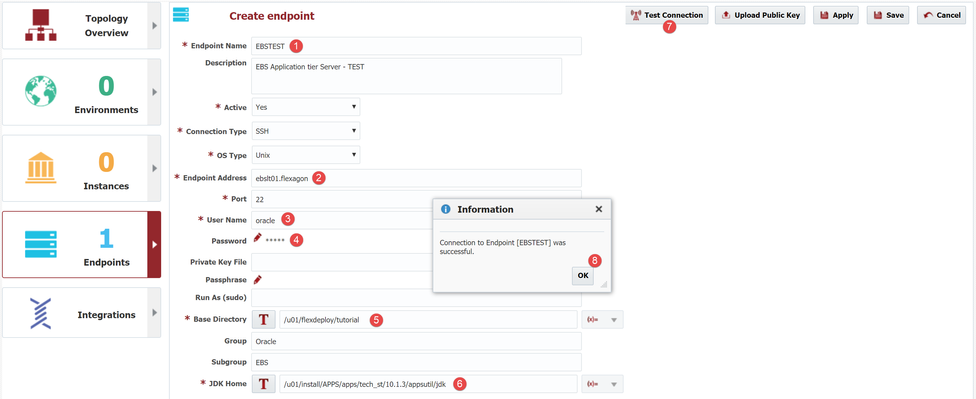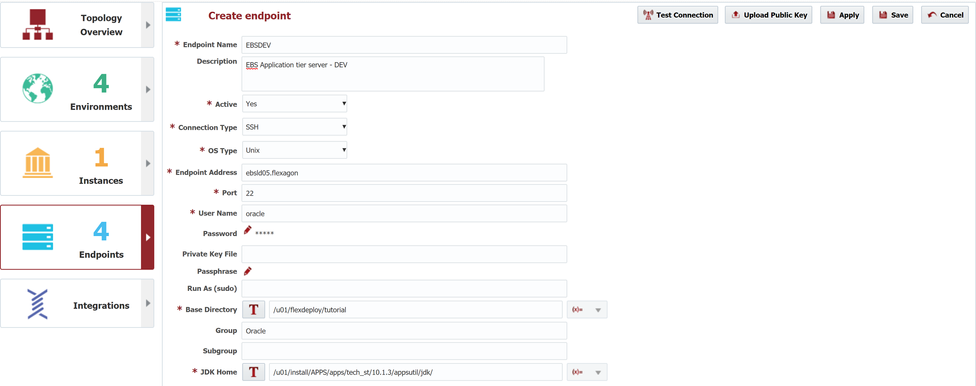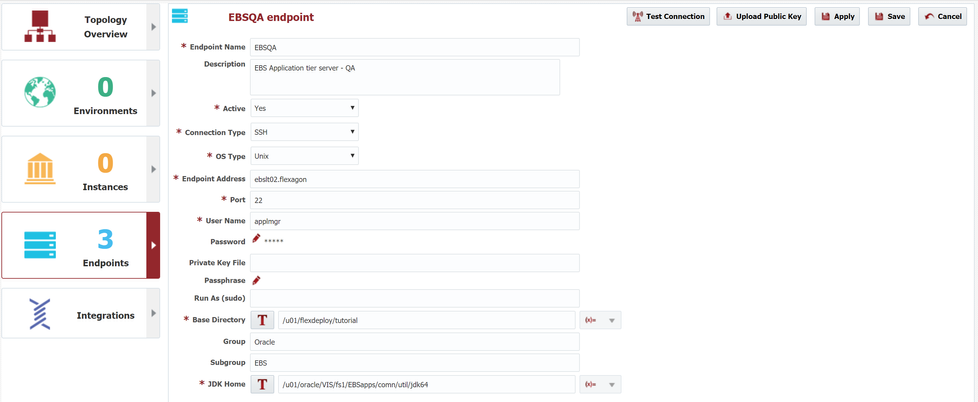Endpoints (EBS)
At the completion of this section, you will:
- understand the use of endpoints in the deployment process
- be able to create/modify an endpoint
Now that we have created the EBS workflows to orchestrate the steps of the build and deployment process, we need to be able to communicate with the actual servers which will execute those steps. The component that provides this functionality is an Endpoint and it will contain connection and host related information. FlexDeploy has an agentless architecture (using SSH) so there are no permanent processes to install or manage on the endpoint servers.
Viewing the current list of Endpoints is achieved by selecting Topology from the menu and then selecting the Endpoints tab on the left. Click on the + in the upper right corner to create and configure a new Endpoint.
Tip
FlexDeploy's EBS plugin perfroms all build and deployment actions through the application tier only. For database objects, they are loaded into the database using SQL Plus on the application tier, therefore no connectivity (endpoint) to the database server is required. When a shared file system is used across the application-tier nodes, only one of the nodes needs to be configured as an endpoint. This tutorial assumes a shared APPL TOP. Other options are supported, but are outside of the scope of this tutorial.
Enter the following required fields for the new endpoint, and click Test Connection to validate and ensure connectivity can be established.
| Field | Description |
|---|---|
| Endpoint Name | A descriptive name for the endpoint. |
| Endpoint Address | The DNS name or IP address of the endpoint. |
| User Name | User for which to connect to the endpoint server with. |
| Password | Password for the User Name. |
| Base Directory | Temporary working area for FlexDeploy executions on this server. FlexDeploy manages cleaning up the base directory automatically, but a minimum of 4 GB is required. The Base Directory must be writable by the User Name configured on the endpoint. |
| JDK Home | Location to the JDK (or JRE) running on the endpoint server. FlexDeploy plugins are executed as small Java programs which are shipped to the endpoints. All endpoints must have a JDK or JRE available (Java 6, Java 7, or Java 8). |
Repeat for the following endpoints:
The following endpoints are now configured in topology:
Tip
The LOCALHOST endpoint comes out of the box with a new installation and represents the FlexDeploy server host itself. Executions running on this enpoint will run within the FlexDeploy server JVM. We will not be utilizing the LOCALHOST endpoint in this tutorial.
| Completed 3 of 11 Sections | Continue to Environments | Back to Workflows |
|---|
- style





